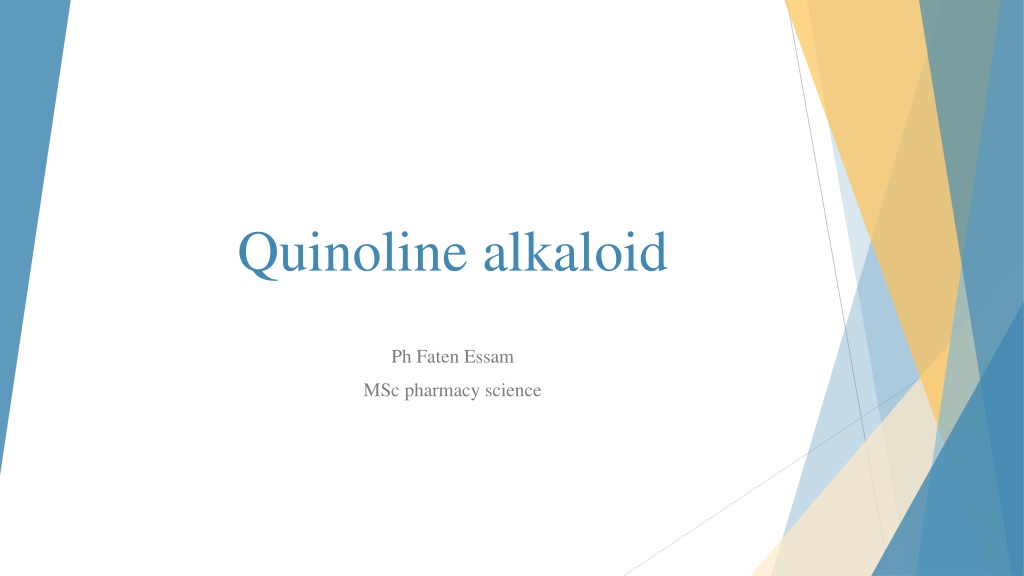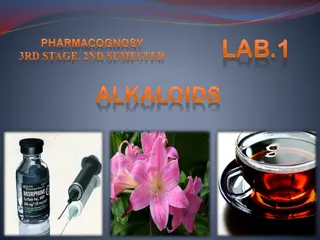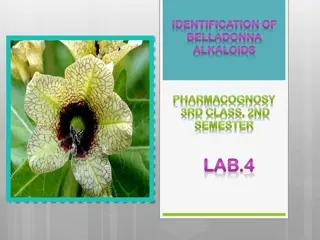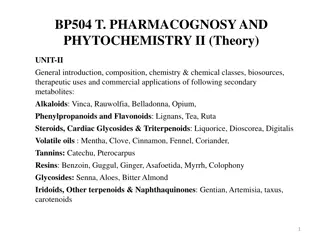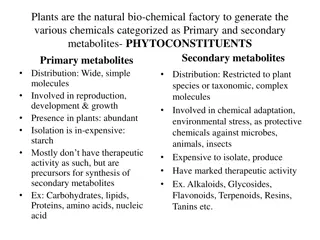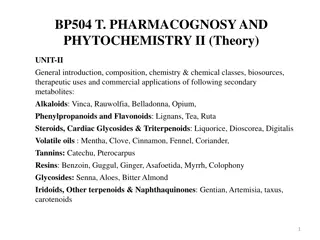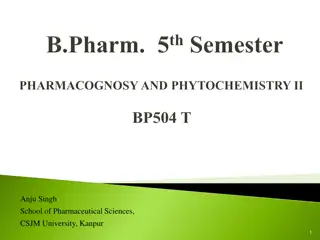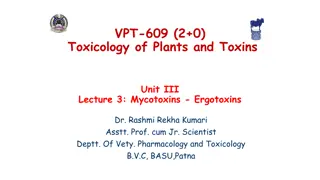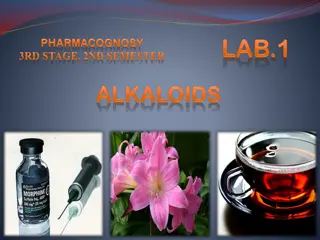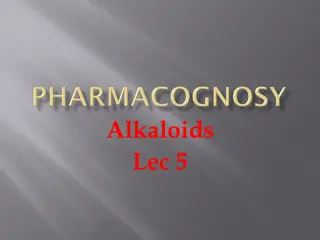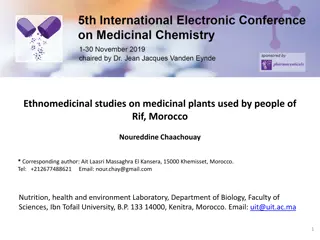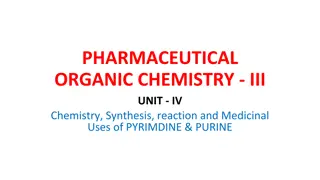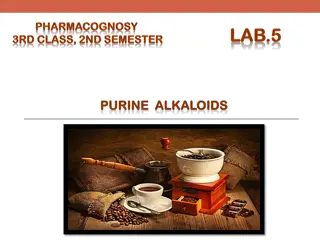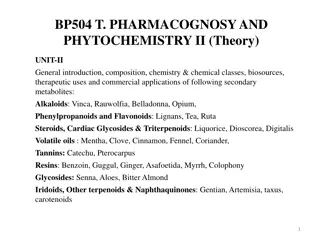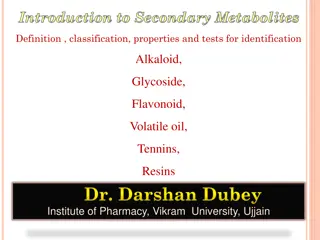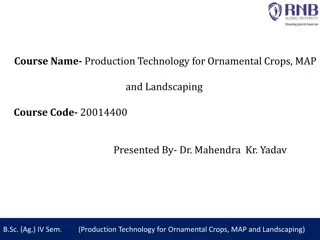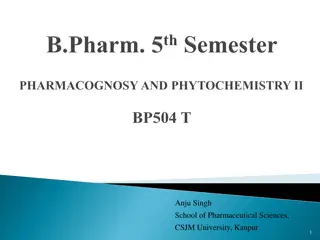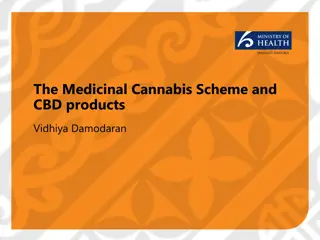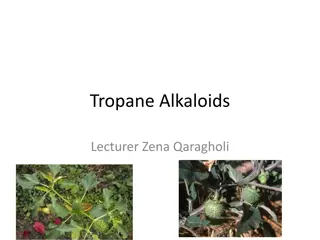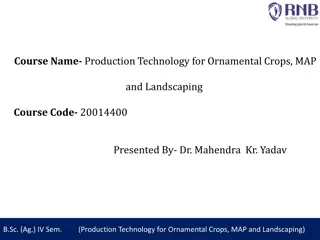Understanding Quinoline Alkaloids in Ruta graveolens for Medicinal Purposes
Ruta graveolens, commonly known as Rue, contains quinoline alkaloids and other active constituents with medicinal properties. This plant is used in the treatment of various inflammatory conditions, ulcers, arthritis, and more. However, there are cautionary notes for specific groups such as pregnant women and patients with certain disorders. The isolation procedure of alkaloids from Ruta involves specific extraction methods for further analysis.
Download Presentation

Please find below an Image/Link to download the presentation.
The content on the website is provided AS IS for your information and personal use only. It may not be sold, licensed, or shared on other websites without obtaining consent from the author. Download presentation by click this link. If you encounter any issues during the download, it is possible that the publisher has removed the file from their server.
E N D
Presentation Transcript
Quinoline alkaloid Ph Faten Essam MSc pharmacy science
Quinolones Is a heterocyclic aromatic compound with chemical formula C9H7N Its slightly soluble in cold water but dissolve readily soluble in hot water and most organic solvents. Common example of plant contain quinoline alkaloid Cinchona and Ruta
Ruta Scientific name : Ruta graveolens Family Rutaceae Ruta is commonly known as Rue is a genus of ever green subshrub (20-60cm in tall ) , its grown in garden all over the world , it cultivated for its medicinal properties and insect repellent properties
Active constituents Ruta contain many important active ingredient include : Glycoside Rutin Quinoline alkaloids Tannins Oils Sterols
Medicinal uses of Ruta Ruta documented therapeutic uses include the treatment of inflammatory conditions, eczema, ulcers, arthritis, fibromyalgia, antidote for venoms, It also have (anthelmintic , antispasmodic , carminative ,emetic and expectorant ) effect
Caution and contraindications Pregnant and lactating women GIT disorder Patient with renal disorders Patient with liver disease
Plant used in this lab Ruta graveolens Part used whole plant
Procedure 1- add 100 ml of hexane to 10 gm of plant . (why ?)
2- Filter plant material 3-then use method 2 of alkaloid isolation which include : a. To the marc add 100 ml of dilute acidified alcohol and mix for 10 min. b. Filter the plant material and collect the extract
c- Take 5 ml of extract in s. p and add 5 ml of chloroform to it then shake well and let stand d-Now take the aq layer and add sodium bicarbonate ????
e-Add 5 ml of chloroform to the mixture and collect the organic layer
Detections Wagner's test Potassium permanganate + extract 1-reagent color (purple) disappear 2- brown precipitate will form
